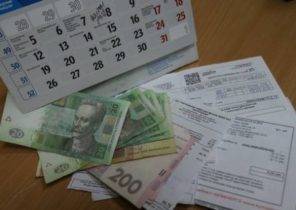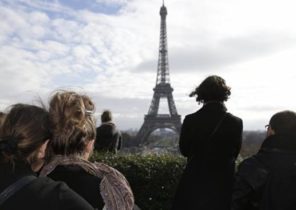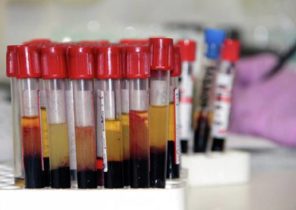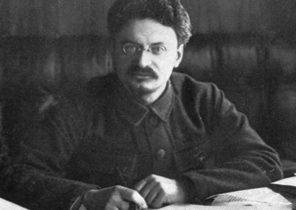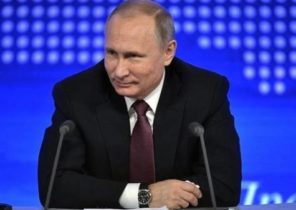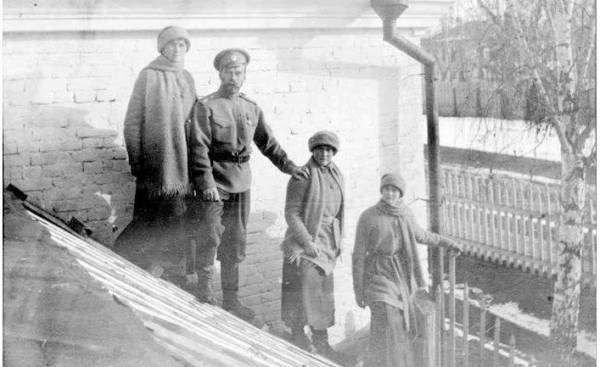
July 17, 1918, when the White Army approached the outskirts of the Siberian city of Yekaterinburg, which kept red, 12 armed Bolsheviks introduced a group of 11 people in the basement of the Ipatiev house, called the Soviet authorities, the House of special purpose. The youngest in this group was a sickly 13-year-old boy Alex, who was carried on the hands of his father. Family members called the father of Niki, but for me, as for millions of Soviet people, he later became the “bloody tyrant” Nicholas II.
The deposed king was accompanied by daughters Anastasia, Maria, Tatiana and Olga, and Alexander’s wife and servants. Who commanded the soldiers Yakov Yurovsky quickly read written on a piece of paper the text: “the Revolution is dying, should die, and you”. Then shots rang out.
It was neither the beginning nor the end of a sad destiny and the plight of the Romanov dynasty that ruled Russia for over 300 years. A few weeks earlier in another Siberian forest shot the king’s brother Michael, in whose favor Nicholas in March abdicated. The next day after the execution of the Tsar and his family were beaten and dumped in the semiflooded mine near the town of Alapayevsk not far from Ekaterinburg, the widow of the brother of the king, Elizabeth, his cousin Sergei, and his nephews Ivan, Constantine, Vladimir and Igor. Survived after falling to the bottom of a 20-metre mine sang Orthodox prayers, than very much annoyed the Bolsheviks. Then the soldiers began to throw grenades into the mine. But made later the autopsy showed that some of the Romanovs were dead for several days.
The last group the execution of the Romanovs took place in 1919 in the Peter and Paul fortress in Petrograd. There, after a few months were shot and buried in a mass grave cousins Tsar Nicholas, Dimitri and George, and his uncle Paul. Numerous well-known people from Russia and from abroad begged the Bolshevik government to release them. In denying one such request filed by the writer Maxim Gorky in Grand Duke Nikolai Mikhailovich, head of the Imperial Russian historical society, Vladimir Lenin said: “Revolution does not need historians”.
It is estimated that by 1920, of the 53 Romanovs who were alive at the time of the Bolshevik seizure of power in October 1917, alive was only 35 people. Those who could, fled Russia in all possible ways: someone on the ship, someone on foot. About a dozen of the Romanovs, including the mother of Nicholas Maria Feodorovna, his sister Xenia and her husband Alexander, were evacuated from their Crimean estates warships, who sent their cousin, the king of England George V. In Europe, they joined the thousands of Russian immigrants who fled their country from the Bolshevik terror. Being without a homeland and basically no means of livelihood, shocked to the depths of the Romanovs were forced to live without a country, which they debt of blood ruled 300 years, and to mourn those who were there.
Worst of all was that survivors could not bury the dead. Of all the murdered Romanovs earth was betrayed only one was a cousin of Nicholas Dimitri. His body was dug up from mass graves and buried in the yard of a private home, a former aide to Dmitry. The bodies of Alapaevsk martyrs were extracted from the mine and then transported further to the East when whites began to retreat. Their remains are buried at the Russian cemetery in Beijing, which was demolished in 1957. Now their graves are covered with layers of asphalt.
Despite intensive search, which, during a short stay white in Ekaterinburg was engaged in the investigator Nikolai Sokolov, the bodies of members of the Imperial family was never found. At the time stubbornly went unsubstantiated rumors that the heads of Tsar Nicholas and Empress could not find as they were sent to Lenin as proof that the Romanov eliminated.
The mother of the king until his last breath was waiting for news from his “unfortunate Nicknames”, refusing to believe the newspaper reports of his death. Shortly after his arrival in Paris in 1920, the falcons, who also became an immigrant, tried to give Romanov the box, where, he said, were the evidence he collected at Ganina Yama. This is another mine near Yekaterinburg, which was allegedly destroyed by the body of members of the Imperial family. The Romanovs, but it was rejected.
The lack of evidence was in the hands of the Bolsheviks. Consolidated his power, they wanted to distance themselves from the bloodshed, which formed the basis of their state. To 1940-th years were seized all books telling about the “acts of revolutionary justice” in relation to the Romanovs. Also gone personal report of the murderer of the Tsar Yurovsky, who was kept in a prominent place in the Museum of the revolution in Moscow.
Slowly but surely, the memory of the Romanovs erased from people’s memory. When I’m at the beginning of the 1980s grew up in the USSR and studied history at school, in books about the Romanovs had almost no references. Instead, the authors prefer faceless words like “tsarism”, “tyranny” and “autocracy”.
The similarity between the story and the crime is that someone somewhere is always trying to get to the truth. It is not clear what forced the filmmaker Helium Ryabov, who worked closely with the Soviet Ministry of internal Affairs, to start cooperation with the Ural geologist Alexander by Avdonina searches the body of the slain king in Porosencova the ravine a few kilometers away from Ganina Yama. We also don’t know why Ryabova was supported by his boss, the Minister of internal Affairs Nikolay Shchelokov, who was a close ally of Soviet leader Leonid Brezhnev.
Whatever it was, but in 1979, Ryabov was brought to Moscow three bullets pierced and corroded by the sulfuric acid of the skull. There he tried to convince the Orthodox priests to help in the burial of the remains of the family of Tsar Nicholas. Ryabov believed that the executioners carried the remains of Ganina Yama in Porosenkov Log after local villagers found the place of execution. The Church authorities refused, fearing a negative reaction from the atheist state, and then Ryabov and Avdonin returned their findings in the pig Log, cut on a homemade cross the line from the gospel, set the cross at the burial site and began to wait for better times.
In 1989, the Russian playwright Edvard Radzinsky published a sensational article, which draws on declassified Yurovsky’s memoirs where he describes in detail the penalty. The country shuddered. In July 1991, six months before the dissolution of the Soviet Union, President Boris Yeltsin appointed a Commission to investigate these killings. The Commission conducted an exhumation of the remains of nine bodies in Porosencova the Log. After seven years of archival searches and medical examinations, which were held by Russian and foreign experts, including the collection of samples and DNA analysis of descendants of the Romanovs, it was confirmed that the found remains do belong to the family of the king and their servants.
After eight decades after the execution of the Royal family nine small coffins with the Imperial regalia was sent to the “cradle of revolution”, which at that time gained its original name of St. Petersburg.
Among fifty Romanov, who arrived from all over the world for burial of their relatives, was one of my American neighbor, Alexei, the great-grandson of Xenia and Sandro, who left the Crimea aboard a British warship. Alex told me about how all these scattered revolution uncles, nieces and nephews suddenly know each other in the corridors of the St. Petersburg hotel “Astoria”.
That day, President Yeltsin, speaking in a televised address to the Peter and Paul Cathedral, called the nation to repentance for the “collective guilt”. Alex told me what it meant to him and his family when they saw the last flag wrapped coffin is lowered into the family tomb.
“If earlier the sense of family we have no, — he said, — now there was some inextricable connection”.
But at the funeral, in 1998, absent the leadership of the Russian Orthodox Church. Prayers for the dead were read by the deacons, not bishops. The reason for this conspicuous absence of steel doubts about the authenticity of the remains. For the same reason the funeral did not come, the great-great-granddaughter of Tsar Alexander II, Maria Romanova, who is now living in Spain. She claims the management “of the Russian Imperial house”, but its claims are disputed by many members of the Romanov family.
Skepticism and doubts of the Church explain the obvious discrepancies of the locations of the remains. In 1918, the investigator Sokolov said that the resting place of steel trunks Ganina Yama, but buried in the temple of the body has been found in Porosencova the Log. In addition, he found only nine bodies, though the shot was 11 people. Doubt was aroused and the authenticity of the Yurovsky report. Most dealt with the question of Russian and foreign experts believe these concerns are not directly related to the case. Boris Nemtsov, who headed the Commission to investigate the case of the Romanovs in the final stage of its work, convinced the Church not to interfere with the funeral.
In 2001 the Church was built in Ganina Yama monastery. Build it in Porosencova the Log she refused. But the contradictions do not end there. In 2007, the American organization called S. E. A. R. C. H, which was created by the heirs Sokolova, found two bodies in another pit in Porosencova the Log. Despite compelling evidence of the medical examination and DNA tests, the Church refused to admit that these remains belong to children of Nicholas, Alexei and Maria. Some years the boxes with the “ash mass” and several bone fragments (this is all that remains of the children) gathered dust on the shelves of Russian state archives.
In 2015, under pressure from the Romanov family, the Russian Prime Minister Dmitry Medvedev has created another Commission, which finally recognized the remains authentic. But scheduled for October, the funeral did not take place. Instead, the remains transferred to the Church for “additional checks”. Or nature of inspections or the timing of their completion is not reported. Speaking in 2016, the Church leadership, head of the Russian Orthodox Church, Patriarch Kirill declared that the Church doubts the conclusions of the Commission of Yeltsin, Nemtsov, and praised the decision of President Vladimir Putin to hold a new “full investigation”. The Romanov family, which are mostly kept in the dark again waiting for words from Russia.
But time does not stand still. Died Gely Ryabov. Left some older members of the Romanov family. Nemtsov killed in 2015 in Moscow. This bloody episode of Russian history still remains unresolved and the mystery unsolved, despite thoroughly investigated the facts and circumstances.
After the Russian revolution a century has passed, and the son and daughter of Tsar Nicholas remain buried, although the embalmed body of the main enemy of the Romanovs, Lenin continues to attract tourists. Sometimes the story is a warped sense of humor.
This is an essay from the “Red century” about the history and legacy of communism a century later, after the revolution in Russia.


